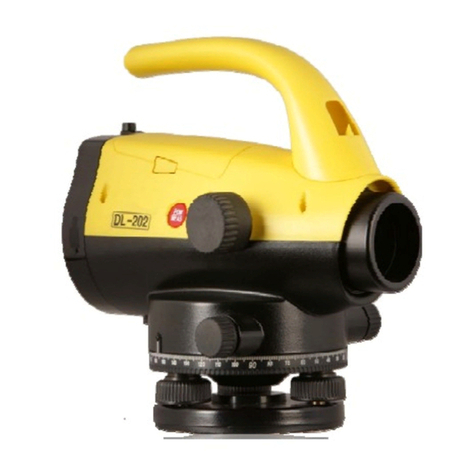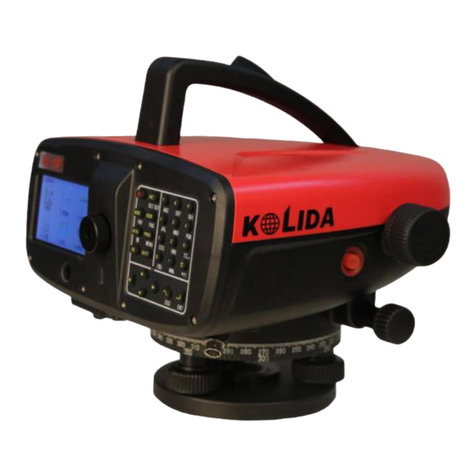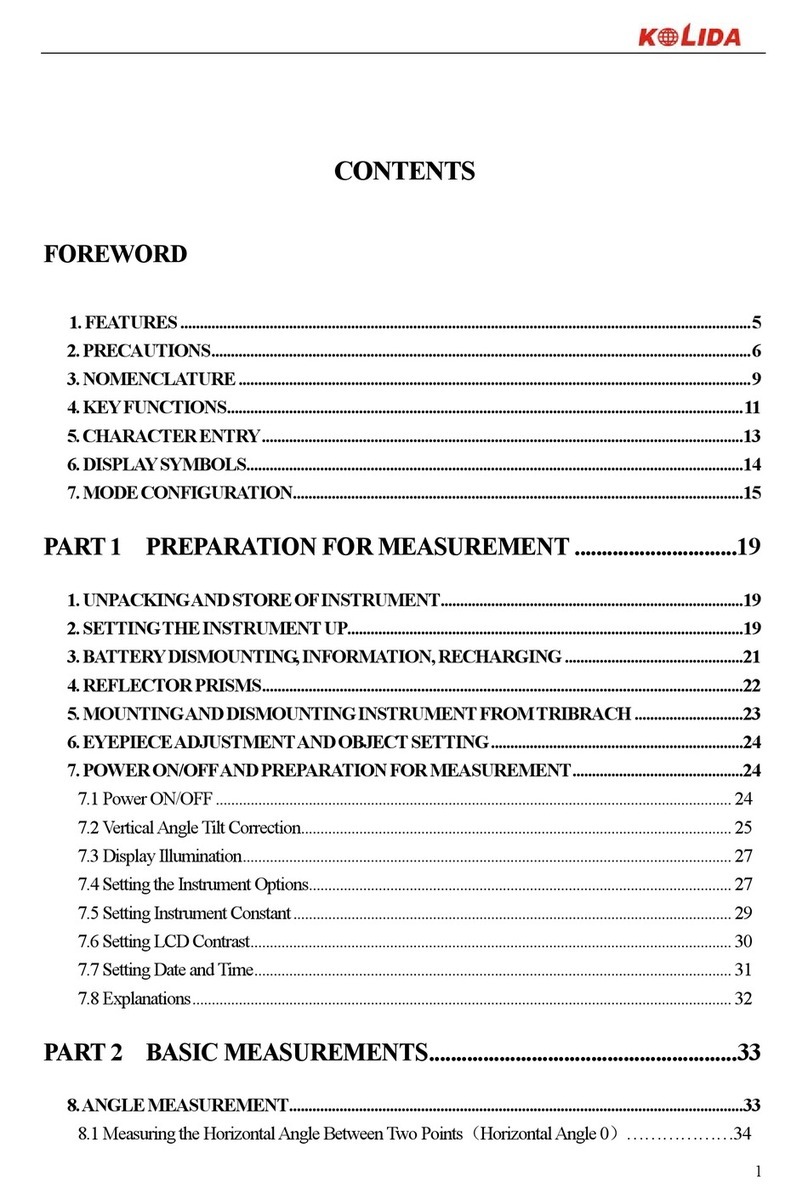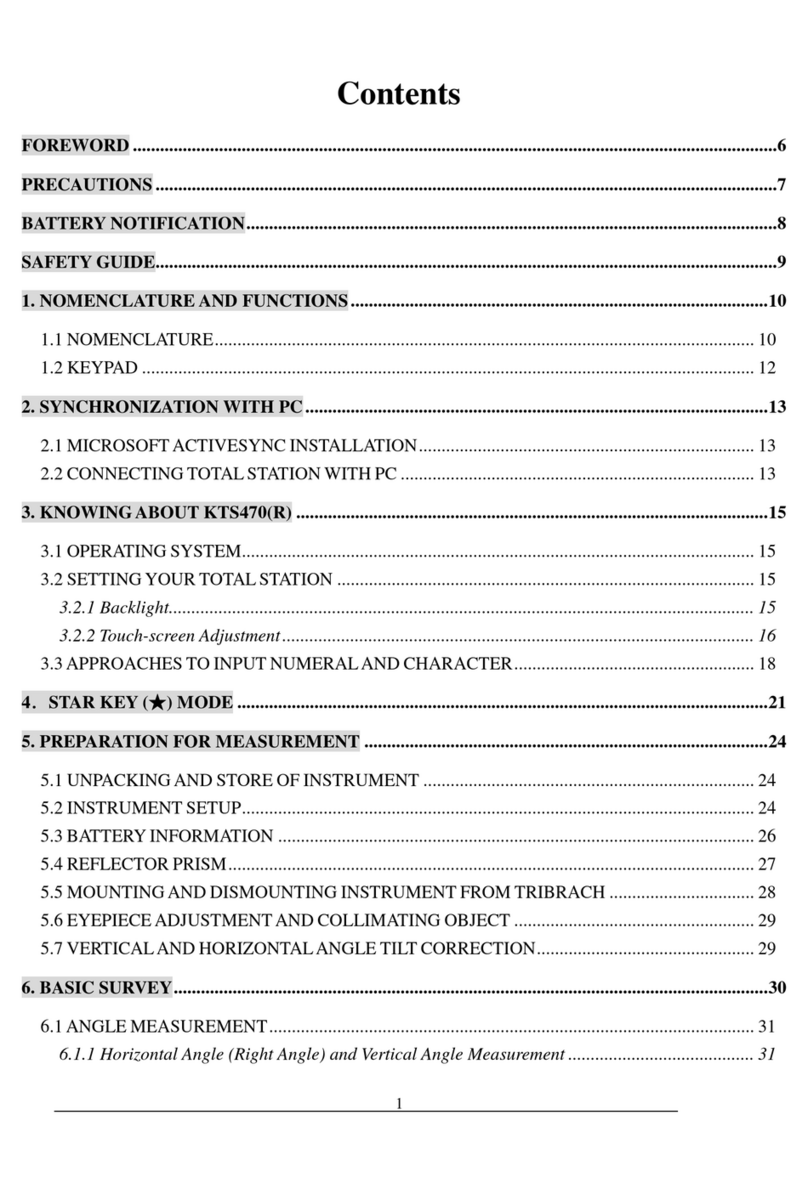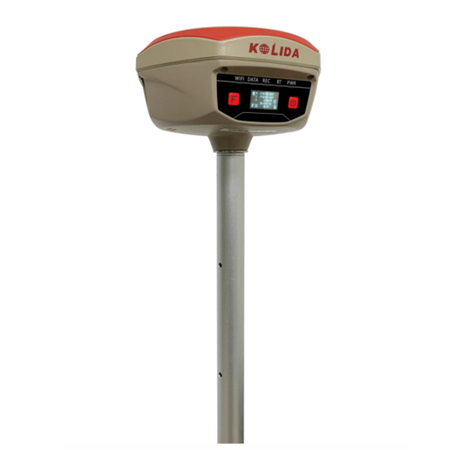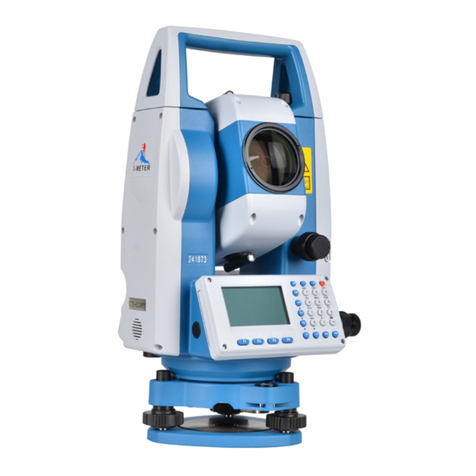8.4 Horizontal Angle Repetition.........................................................................................34
8.5 Slope in %................................................................................................................35
9. Distance Measurement.................................................................................................................36
9.1 Settings for Distance Measurement...............................................................................37
9.2 Laser Pointer and Laser Plummet................................................................................39
9.3 Distance and Angle Measurement.................................................................................40
9.4 Review of Measured Data..........................................................................................41
9.5 OutputData to a computer...............................................................................................42
10.Coordinate Measurement.............................................................................................................43
10.1 Input Instrument Station Data.....................................................................................44
10.1.1 Reading in Registered Coordinate Data................................................................45
10.2 Azimuth Angle Setting..................................................................................................46
10.2.1 Set Backsight Point by Angle....................................................................................47
10.2.2Set BacksightPoint by Coordinate.............................................................................48
10.3 Coordinate Measurement.............................................................................................48
PART3 ADVANCED MEASUREMENT..................................................................52
11. Setting-Out Measurement.......................................................................................................52
11.1 Distance Setting-OutMeasurement............................................................................53
11.2 REM Setting-Out Measurement..............................................................................55
11.3 Coordinates Setting-Out Measurement...................................................................57
11.4 Distance Measurement Parameters Setting..........................................................60
12. Offset Measurement............................................................................................61
12.1 Single-Distance Offset Measurement.....................................................................62
12.2 Angle Offset Measurement………..........................................................................65
12.3 Two-Distance Offset Measurement......................................................................66
13. Missing Line Measurement.................................................................................................69
13.1 Measuring the distance between Multiple Targets.............................................70
13.2 Changing Start Point.........................................................................................71
14.REM Measurement...................................................................................................................72
15. Resection Measurement......................................................................................................73
15.1 Re-Observing......................................................................................................76
15.2 Add Known Point....................................................................................................77
16. Area Calculation................................................................................................................78
17. Setting out Line..........................................................................................................81
17.1 Defining Baseline.........................................................................................................81
17.2 Setting-out Line (point)...............................................................................................83

